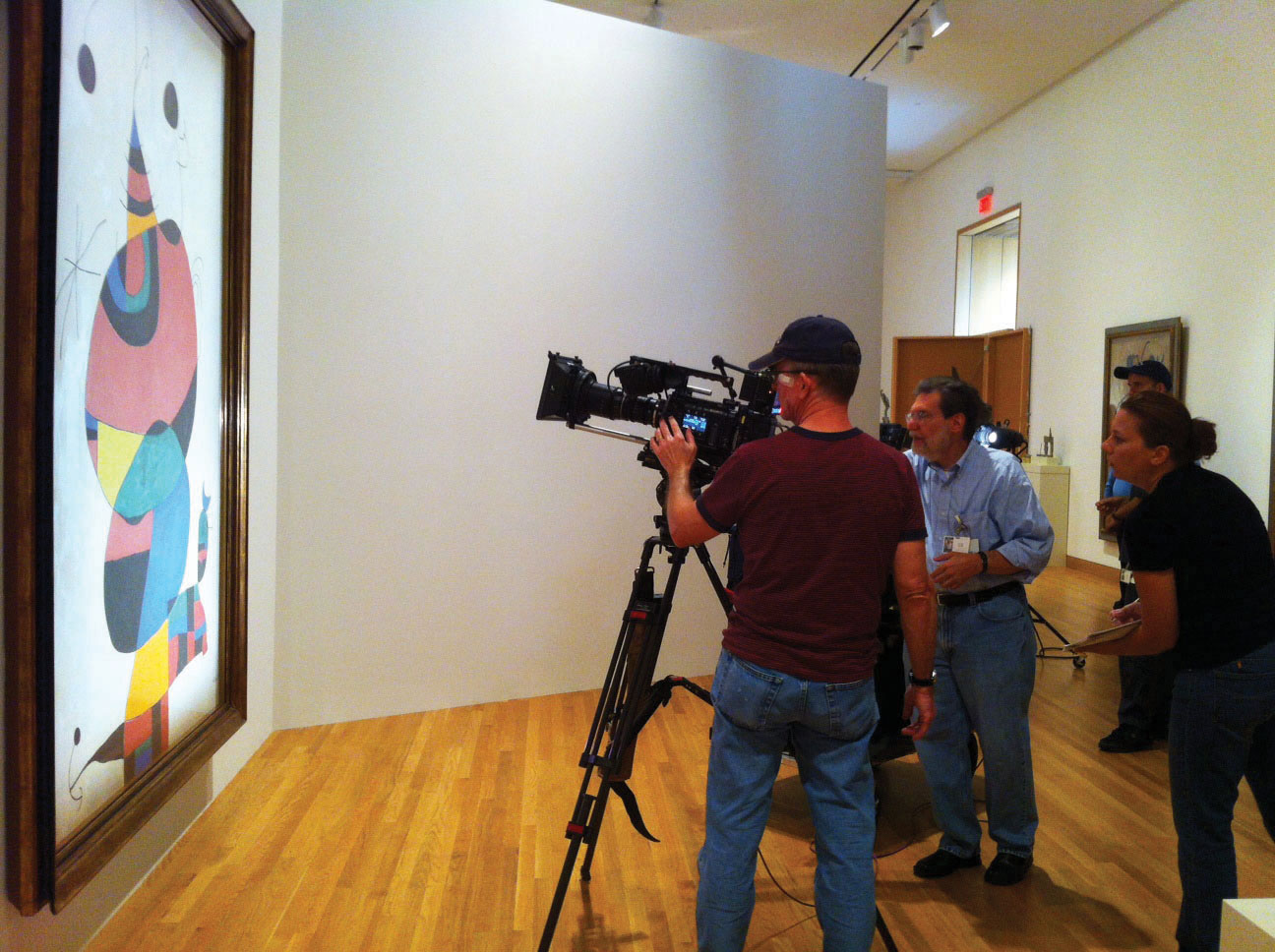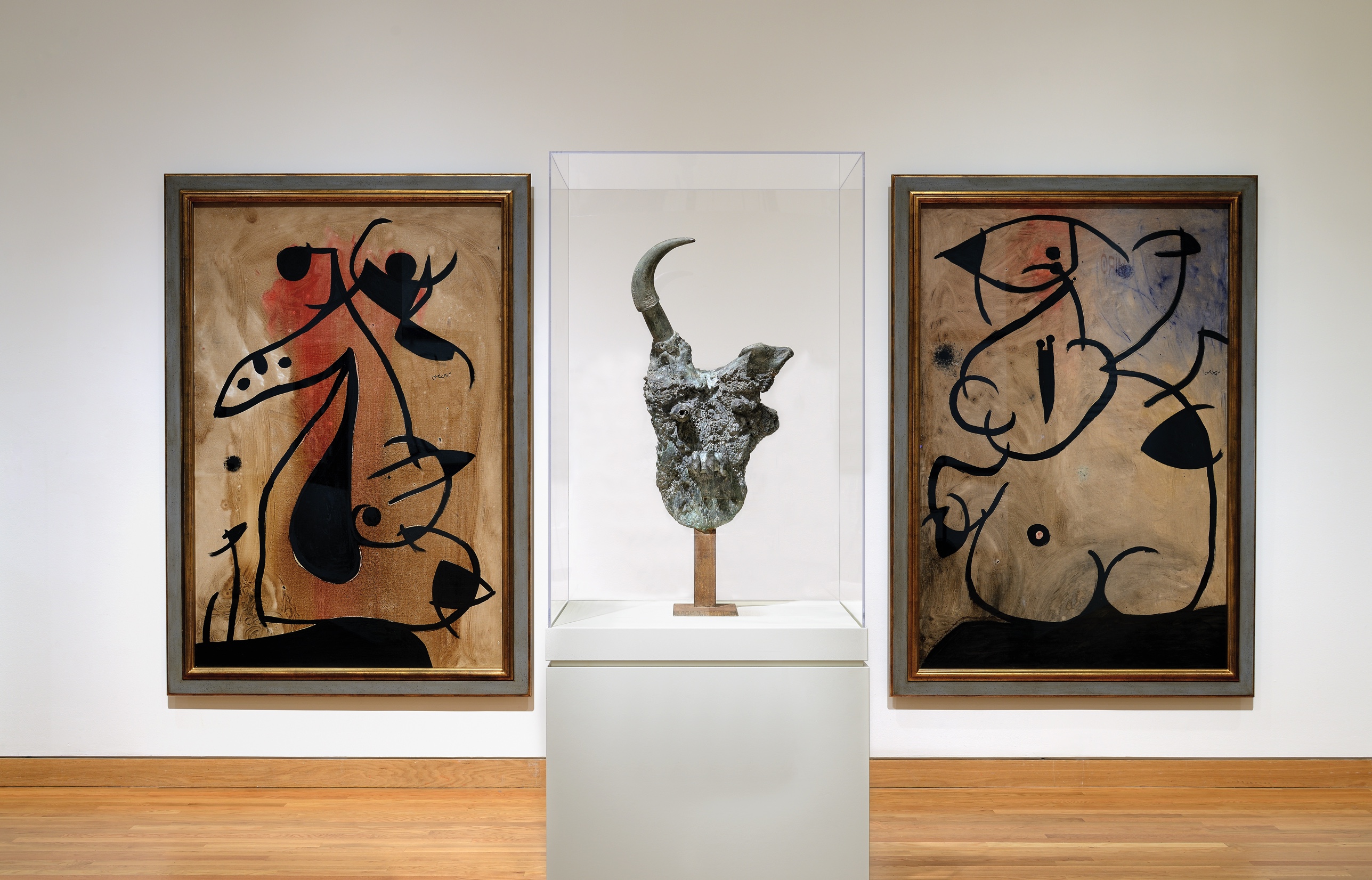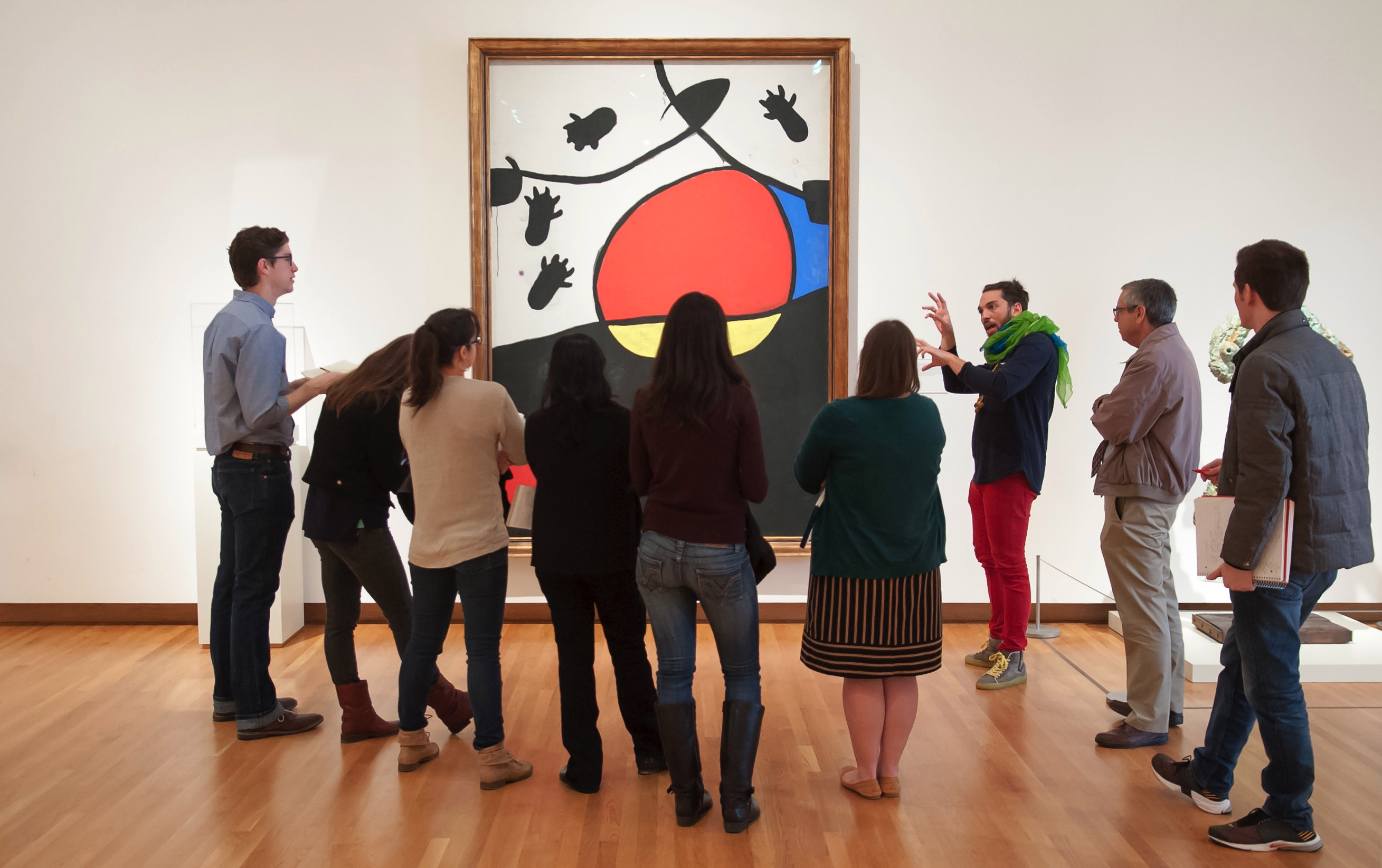Miró: The Experience of Seeing
The Nasher Museum was the only East Coast venue for this ticketed exhibition featuring more than 50 masterpieces by Spanish-born artist Joan Miró. One of the greatest innovators of 20th century art, Miró experienced tireless creativity and tremendous productivity in the last 20 years of his life. In 1956, the artist moved to a new studio on the island of Mallorca, Spain. Here the artist could, for the first time, reflect on decades of his work. For the remainder of his life, Miró underwent a period of tremendous productivity in painting, printmaking and sculpture.
“We can’t wait for visitors to discover this joyous and inspirational exhibition,” Museum Director Sarah Schroth said. “Miró is one of the great masters of 20th century art, and this show reveals the tireless creativity he experienced in the last 20 years of his life. His large, gorgeous paintings are filled with unexpected energy of line and color. And you have never seen sculpture like this by Miró.”
Miró: The Experience of Seeing included 27 sculptures, 18 paintings and six drawings, some of them more than 6 feet tall. The exhibition was organized by the Seattle Art Museum and the Museo Nacional Centro de Arte Reina Sofía. All works were on loan from Spain.
Public TV Documentary on Miró: Aired Statewide
UNC-TV, the public television network of North Carolina, and the Nasher Museum co-produced a 30-minute documentary, Miró: The Experience of Seeing. The show featured historical footage and in-depth interviews with the museum’s Sarah Schroth, Marshall N. Price and Robert Lubar, associate professor of fine arts at New York University and a trustee of the Miró Foundation.
CLOCKWISE: Installation view, featuring many late-career works by Joan Miró: a 1974 painting Paysage (Landscape) (far left), a patinated bronze sculpture, Personage et oiseau (Figure and Bird) from 1968 (second from left) and a 1973 painting, La danse des coquelicots (The Dance of the Poppies) (far right). Photo by Peter Paul Geoffrion. Installation view, featuring Miró’s 1970 patinated bronze sculpture, Tête de taureau (Bull’s Head) between two oil paintings, Femme oiseau II (Bird Woman II) (left) and Femme oiseau I (Bird Woman I), both from 1977. Photo by Peter Paul Geoffrion. Behind the scenes photo by Wendy Hower.



